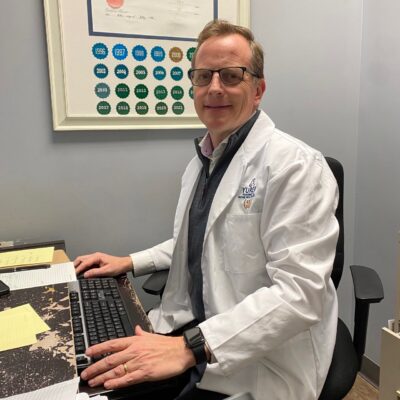By Jeff Yurek, BScPhm
As we age, it’s common to experience aches and pains in various parts of our body. While these discomforts can be a natural part of the aging process, they can also be a sign of underlying health conditions. Understanding the causes and ways to alleviate aches and pains can help seniors enjoy a better quality of life.
Common Causes of Aches and Pains
There are many reasons why seniors may experience aches and pains. One of the most common causes is osteoarthritis, a condition that occurs when the protective cartilage between joints wears down over time. This can result in pain, stiffness, and reduced mobility in the affected joints.
Other conditions that can cause aches and pains in seniors include rheumatoid arthritis, fibromyalgia, bursitis, and tendonitis. Additionally, injuries or overuse of certain parts of the body can lead to acute or chronic pain.
Lifestyle factors can also contribute to aches and pains. Poor posture, lack of exercise, and a diet lacking in essential nutrients can all impact joint health and cause discomfort. Furthermore, stress and anxiety can lead to muscle tension and pain.
Alleviating Aches and Pains
There are several ways seniors can alleviate aches and pains to improve their daily lives. One of the most effective methods is regular exercise, which can improve joint flexibility, build strength, and reduce inflammation. Low-impact activities like swimming, walking, and yoga are especially beneficial for seniors.
In addition to exercise, seniors can alleviate pain by maintaining good posture, stretching regularly, and staying hydrated. Using heat or cold therapy can also be helpful, depending on the type of pain. For example, heat therapy can help relieve muscle tension, while cold therapy can reduce inflammation.
Over-the-counter pain relievers like acetaminophen or ibuprofen can also be used to alleviate aches and pains. However, it’s important to speak with a pharmacist before starting any new medication.
Preventing Aches and Pains
Prevention is key when it comes to aches and pains in seniors. Maintaining a healthy lifestyle with regular exercise and a balanced diet can help keep joints healthy and reduce the risk of developing conditions like osteoarthritis. Additionally, avoiding overuse or repetitive strain injuries can prevent chronic pain from developing.
Managing stress is also important for preventing aches and pains. Activities like meditation, deep breathing, and gentle yoga can help seniors manage stress and reduce muscle tension.
Finally, seniors should prioritize their sleep. Adequate sleep can help reduce pain, improve overall health, and promote healthy joint function.
When to Seek Medical Help
While aches and pains are a common part of the aging process, it’s important to seek medical help if the pain is severe, persistent, or impacting daily activities. Additionally, if there are any other symptoms present, such as fever or swelling, it’s important to speak with a healthcare provider as soon as possible.
In some cases, more advanced medical treatments may be necessary to alleviate pain and improve quality of life. These treatments may include physical therapy, joint injections, or surgery.
In conclusion, aches and pains are a natural part of aging, but they don’t have to prevent seniors from enjoying a fulfilling life. By understanding the causes of aches and pains, seniors can take steps to prevent and alleviate discomfort. Additionally, seeking medical help when necessary can help seniors access the treatment they need to live their best lives.








